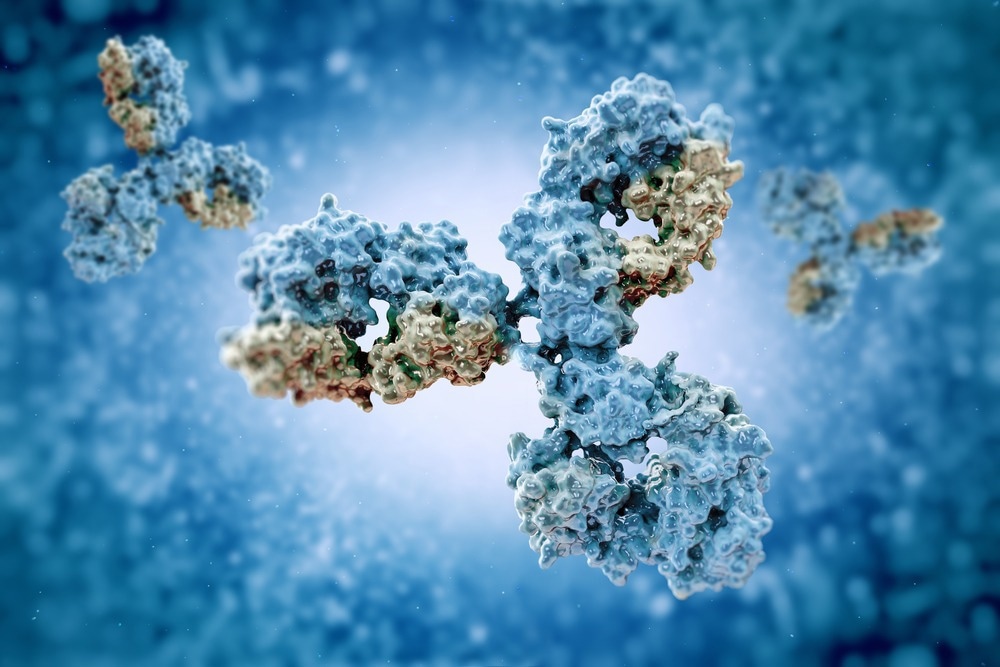 By Neha MathurReviewed by Danielle Ellis, B.Sc.Nov 11 2022
By Neha MathurReviewed by Danielle Ellis, B.Sc.Nov 11 2022In a recent study published in the JAMA Network Open, researchers investigated the placental transfer ratios of anti-severe acute respiratory syndrome coronavirus 2 (SARS-CoV-2) antibodies in pregnant females. They did so in two cohorts of pregnant females; the first cohort had females who suffered from natural SARS-CoV-2 infection, and the other had received coronavirus disease 2019 (COVID-19) vaccination.
 Study: Comparison of Maternal and Neonatal Antibody Levels After COVID-19 Vaccination vs SARS-CoV-2 Infection. Image Credit: vitstudio/Shutterstock
Study: Comparison of Maternal and Neonatal Antibody Levels After COVID-19 Vaccination vs SARS-CoV-2 Infection. Image Credit: vitstudio/Shutterstock
Background
Pregnancy is associated with an increased risk of intensive care unit (ICU) admission, mechanical ventilation support, and mortality from COVID-19. It also increases the risk of still- or preterm birth, preeclampsia, and neonatal ICU admission. With growing evidence showing vaccine safety in pregnancy and increased risk of severe infection during pregnancy, the US Centers for Disease Control and Prevention (US-CDC) strongly recommended COVID-19 vaccination for pregnant females.
Recent evidence suggests that COVID-19 vaccines are immunogenic and vaccine-elicited antibodies get transferred across the placenta into the newborn during pregnancy, as occurs after SARS-CoV-2 infection. So far, most studies' findings have been limited by small numbers of vaccinated persons, qualitative antibody assays, exposure to a single vaccine type, or self-report of vaccination.
About the study
In the present study, researchers used a large group of maternal and cord blood serum samples (dyads) tested for anti-SARS-CoV-2 antibodies. They assessed the association of time since vaccination, vaccine type, gestational age at delivery, and pregnancy-related complications with the placental transfer of anti-SARS-CoV-2 antibodies.
They enrolled all pregnant females who gave birth at Pennsylvania Hospital in Philadelphia, Pennsylvania, and their newborns between August 9, 2020, and April 25, 2021. Notably, they considered only the first neonate from multiple-gestation deliveries in all analyses. The prespecified criteria for preterm and term deliveries were delivery at less than 37 weeks or 37 weeks or later, respectively. The researchers abstracted each female's pre-pregnancy body mass index (BMI) from their medical record self-reported entry in the birth registration form.
During the study period, they screened all pregnant females who needed hospital admission for childbirth for SARS-CoV-2 infection using nasopharyngeal reverse transcription-polymerase chain reaction (RT-PCR) testing. Likewise, they collected cord blood for neonatal blood type and direct IgG/IgM testing. Further, the researchers used an enzyme-linked immunosorbent assay (ELISA) to measure the IgG and IgM antibodies to the receptor-binding domain (RBD) of the SARS-CoV-2 spike (S) protein.
First, the team deidentified all serum samples before antibody level measurements. When results were available, they reidentified seropositive individuals having IgG or IgM concentrations > 0.48 arbitrary units/ml (AU/ml) via manual medical record review. Serum samples with IgG or IgM levels below this cutoff were considered seronegative.
Study findings
The authors noted that the concentration of IgG antibodies to SARS-CoV-2 S was present in higher concentrations after messenger ribonucleic acid (mRNA) vaccination compared with the antibodies elicited by symptomatic or asymptomatic COVID-19. In addition, their concentrations were higher in cord blood after maternal vaccination compared with maternal infection. However, placental transfer ratios were slightly less after maternal vaccination than after maternal infection.
A longer time gap between SARS-CoV-2 exposure and delivery via infection or vaccination and higher gestational age at delivery increased placental antibody transfer ratios. Multivariate modeling accounting for these factors and maternal pregnancy comorbidities also showed the significance of the time since infection/vaccination to delivery.
Consistent with prior findings, the researchers did not find a marked difference in placental antibody transfer ratio between pregnant females with asymptomatic and symptomatic SARS-CoV-2 infection. However, none of the symptomatic individuals were critically ill; therefore, they could not determine whether the criticality of maternal infection was a determinant of placental antibody transfer.
Furthermore, the authors found no difference in maternal IgG level or transfer ratios for preterm and term deliveries when accounting for the time since vaccination to delivery. Fewer females had a documented SARS-CoV-2 infection before the current pregnancy, but transfer ratios were still robust.
The longest time gap between COVID-19 incidence and delivery was 384 days, with a placental antibody transfer ratio of 1.2. Since antibody levels post-vaccination were higher vs. post-infection, cord blood IgG levels of the eight cases of preterm delivery were markedly higher in vaccinated females than in cases of term delivery after COVID-19 incidence.
Conclusions
This study expanded the growing data on COVID-19 vaccination in pregnant females. By using deidentified samples, the researchers minimized consent bias. Additionally, they assessed placental antibody transfer in females with diverse demographic characteristics. Furthermore, they compared the response to asymptomatic and symptomatic SARS-CoV-2 infection with different COVID-19 vaccines at varying durations between the first dose and delivery.
Although the present study did not address the effectiveness of COVID-19 vaccination in preventing infection among pregnant females or newborns, they found that antibody levels after vaccination with an mRNA vaccine were at least 10-fold higher than the levels after infection. Furthermore, the mRNA-1273 vaccine elicited higher antibody levels than the BNT162b2 vaccine.
However, placental antibody transfer ratios were lower after vaccination than after infection. Placental transfer and cord blood IgG were detectable from 15 days after the first mRNA vaccine dose and transfer ratios surged for many weeks after the first dose.
SARS-CoV-2, a relatively new respiratory pathogen, presents an opportunity to study placental transfer kinetics at different time points during pregnancy in females having no prior immunity in most cases. It is significant because the placental transfer of antibodies present at conception in low levels is distinct from the transfer of antibodies boosted during pregnancy, such as the intent of diphtheria, tetanus, and pertussis (DPT) vaccine administered during pregnancy.
Overall, the finding that time from infection or vaccination to delivery is a key determinant of placental antibody transfer efficiency could inform the best COVID-19 vaccination timing during pregnancy.